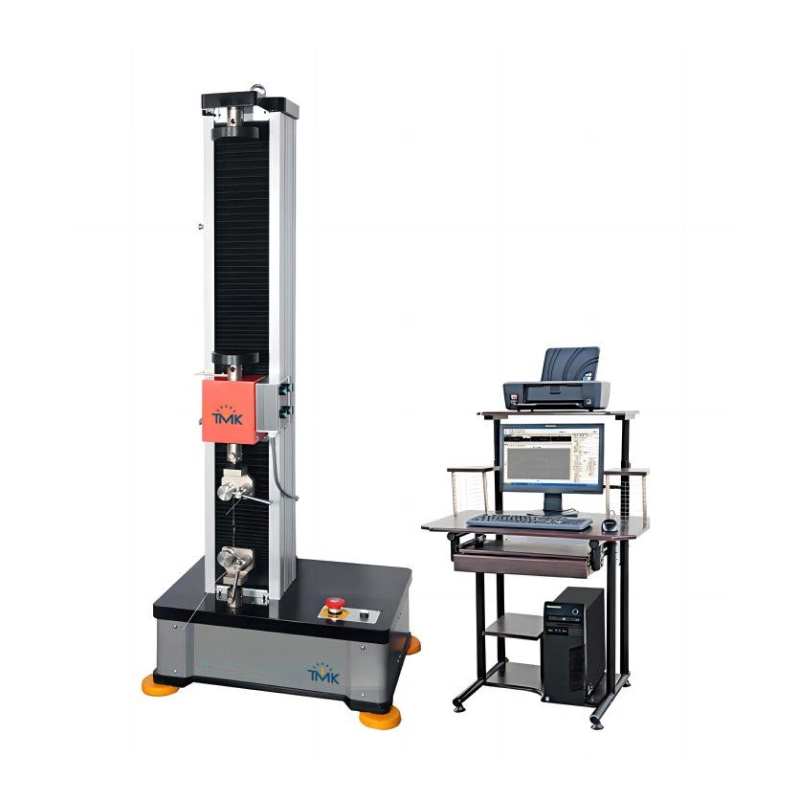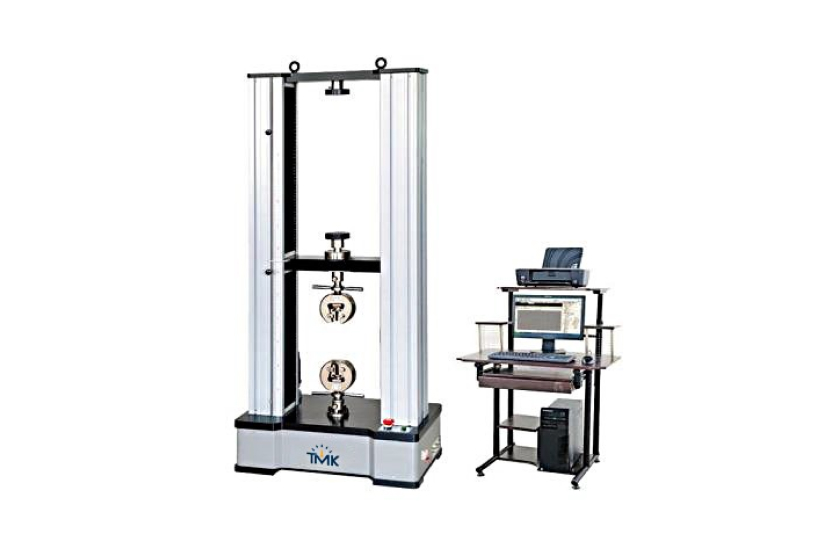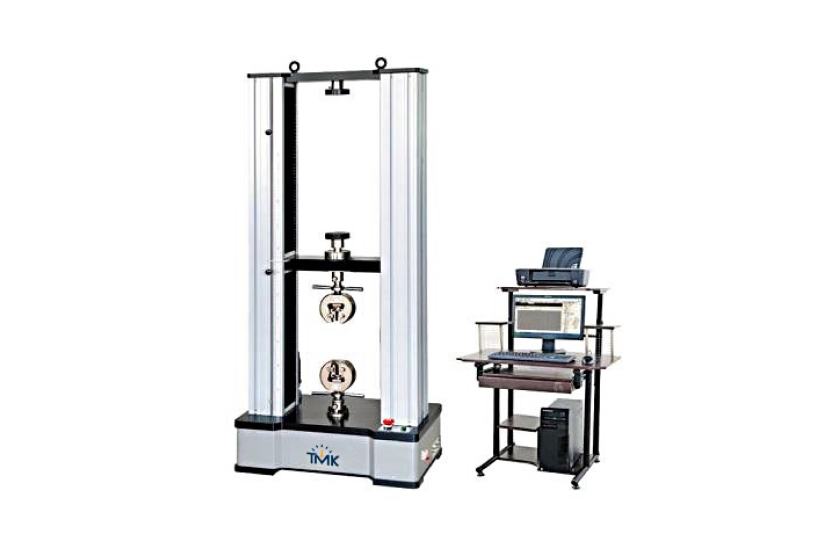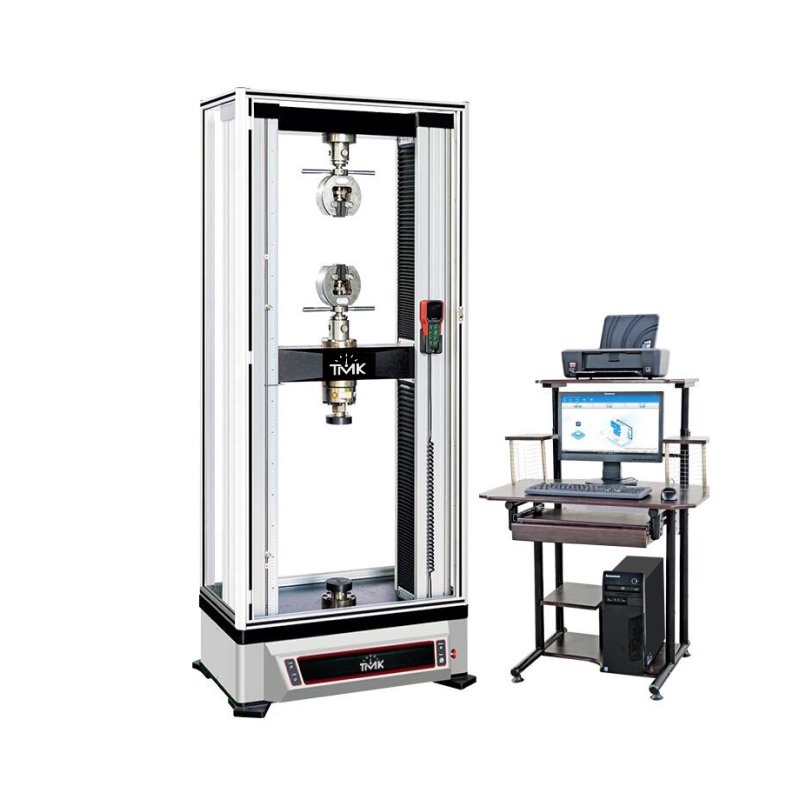1. Introduction
ETM series electromechanical testing machines offer force, displacement or deformation closed loop testing in tension, compression, flexure, shear, tear and peel etc. The machine can be equipped with a variety of accessories including: grips, fixtures, compression frames, thermal cabinets and extensometers covering all relevant applications as testing of rubber, plastics, foils, films, textiles, adhesives, paper, foods, foams, timber, wires or other metallic or non-metallic specimens and medical, electronic and other components. The load frames are rigid constructed, providing superior axial and lateral stiffness.
2. Application range
Load meets or exceeds the following standards: ASTM E4, ISO7500-1, EN 10002-2, BS1610, DIN 51221.
Strain measurement meets or exceeds the following standards: ASTM E83, ISO 9513, BS 3846, EN 10002-4.
Safety: This machine shall conform to all relevant European CE Health and Safety Directives EN 50081-1, 580081-1, 73/23/EEC, EN 61010-1
2.1 Rigid and reinforced Plastics/ Composites:
EN ISO 6259 – parts 1/2/3 Determination of tensile properties of thermoplastic pipes;
EN ISO 527-1 – parts 1/2/3 Determination of tensile properties on plastics;
ASTM D638 Standard Test Method for Tensile Properties of Plastics
ISO 604 Plastics – determination of compressive properties
ASTM D695- Plastics — Standard Test Method for Compressive Properties of Rigid Plastics
EN ISO 9969 Determination of ring stiffness on thermoplastic pipes;
ISO 14125 Flexural Properties of Fiber-Reinforced Plastic Composites
ASTM D3846 Standard Test Method for In-Plane Shear Strength of Reinforced Plastics;
EN ISO 13968 Plastics piping and ducting systems -Thermoplastics pipes-Determination of ring flexibility;
EN ISO 844 Determination of compression properties;
2.2 Geo-textiles:
BS EN ISO 10319 Geotextiles —Wide-width tensile test;
ASTM D3950 Standard Specification for Strapping, Nonmetallic (and Joining Methods);
JBT 8521(EN 1492-2): Textile slings. Safety. Round slings, made of man-made fibers, for general purpose use;
ASTM D 6775-02 Standard Test Method for Breaking Strength and Elongation of Textile Webbing, Tape and Braided Material;
2.3 Metal:
ASTM E8 Standard Test Methods for Tension Testing of Metallic Materials;
ISO 6892 Metallic materials — Tensile testing — Method of test at ambient temperature;
BS EN 10002-1Determination of tensile properties on metals;
BS EN 10002-5: Metallic materials —Part 5: Method of test at elevated temperatures;
ASTM E21: Standard Test Methods for Elevated Temperature Tension Tests of Metallic Materials;
IS0 783: Metallic materials -Tensile testing at elevated temperature;
EN ISO 7438 Determination of flexure tests on metals;
ASTM F606: Standard Test Methods for Determining the Mechanical Properties of Externally and Internally Threaded Fasteners, Washers, Direct Tension Indicators, and Rivets;
ISO 14589: Blind rivets – Mechanical testing;
SAE J429: Mechanical and Material Requirements for Externally Threaded Fastener;
3. Mechanical Features
3.1 Load Frame:
The frames all incorporate human factor considerations in the design to ensure safety, reduce operator fatigue, and provide the highest level of flexibility. Extremely robust crosshead guidance is incorporated in all frame designs providing the highest level of lateral crosshead stiffness.
3.2 High accuracy: The preloaded precision ball-screw with high speed & low noise ensures high speed and position measurement accuracy and less noise.
3.3 High stiffness frame: The load frame is with 4 columns and heavy duty pre-loaded bearings. Preloaded ball screws, precision guidance columns, and a symmetrical drive system improve frame stiffness and alignment
3.4 Safety features: The testing machine stops automatically when the change in the test force exceeds a specified value during operations.
3.5 Over-Travel Limits
Dual over-travel limits, located on the front console, help prevent crosshead overshooting and sensor overloads. A graduated rule along the column can be used to preset these limits to specific distances.






